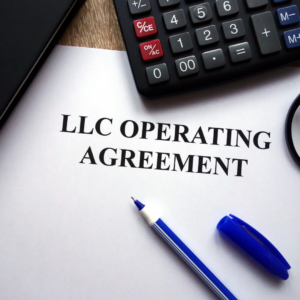
That’s a trick question! Single-member LLC’s (SMLLCs) are disregarded entities in the eye of the IRS. LLC owners are called members. If you are a sole proprietor who formed an SMLLC to protect your personal assets from liability claims arising from your business, you can continue to report your business revenue and expenses using Schedule C with your individual return.
If you formed an LLC with one or more member partners, you are required to file a partnership return on Form 1065. There are no taxes due with the partnership return. It is an information return used to report business revenue and expenses and how it is divided among the members. Each member will receive a Form K1P to report the member’s share of income or loss on Schedule E of his or her individual return. In addition, businesses must track and report each member’s basis in the company from year to year.
What people really mean when they talk about the tax advantages of an LLC is the option to make an S-election. An SMLLC can make an S-election, or it can have up to 100 members. Commonly referred to as S-corporations, these companies must pay a reasonable salary to the members (shareholders) actually working in the business. S-corps file a Form 1120S to report the same information reported on Form 1065. The member pays the usual payroll taxes withheld from any wage-earner, but the employer payroll taxes are an expense to the business, reducing its net income. The residual net income from the business is reported on Schedule E and is exempt from self-employment tax.
Whether this is a tax advantage or not depends on the unique tax position of the member. Simply put, the tax savings must outweigh the additional costs of bookkeeping, payroll and tax preparation. According to the National Society of Accountants’ recent, nationwide fees survey, the average fee to prepare a Form 1120S is $1,000, and payroll reporting fees average about $450. Full payroll services typically cost more.
That is why most accountants recommend that you wait to make an S-election until your income is steady and sufficient to absorb these costs. It is possible to revoke your S-election, but once revoked, you cannot make the election again for a period of 5 years.